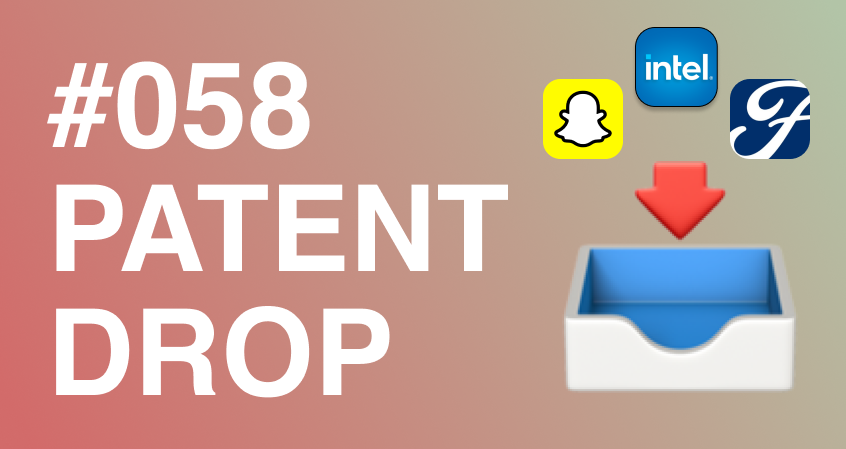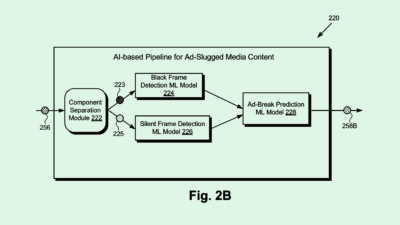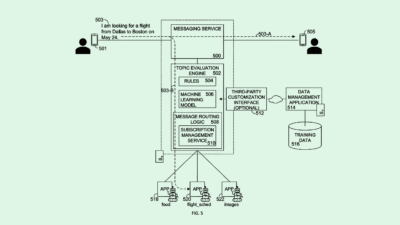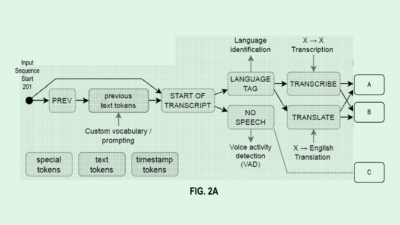Sign up to uncover the latest in emerging technology.
Plus: An EV charging map, prescription AR, robot dogs and more.
Happy Monday and welcome to Patent Drop!
Today’s newsletter is brought to you by The Hustle. For original stories about the world of business, tech, and entrepreneurship – their newsletter is an absolute must read. Join over 2.8 million readers and sign up here.
Today, we’re taking a deep dive into Intel’s under-the-radar work in biometric authentication, Ford’s major EV bet, and Snap’s plan to help people that use prescription glasses see out of their AR ones. Let’s dig in.
#1. Intel: Smile for the authenticator!
Biometrics have come a long way, especially when it comes to cybersecurity. Now, Intel might be taking them a step further with gesture matching for authentication – more than a year after seemingly dropping its work in biometric sensing.
Think of it as a high-tech version of taking a photo of yourself holding up today’s newspaper: Rather than just doing just a facial scan, Intel’s tech also requires users to hold up their hand or tilt their head in a certain position to grant access to systems. To register, users will have to perform a series of gestures, like smirking and throwing up a peace sign, and do one of those gestures at random when trying to log-in, matching an avatar that’s directing the user on the screen.
“Common authentication systems may employ biometric … applications to authenticate a user,” Intel’s patent reads. “However, such systems may be subject to counterfeit measures.”
Another use case Intel points out is health monitoring. The company said that a biometric system like this can be used to analyze “micro changes” in facial movements and performances of gestures over time to detect health problems, such as a stroke.
If Intel has been working on biometrics, it’s certainly done so quietly. This patent was filed in September of 2022, just a little over a year after it closed down RealSense in 2021, its business unit working on biometric sensors, after Intel CEO Pat Gelsinger said all of its assets should fit into its six core units: driverless vehicles, data centers, client computing, graphics, foundry services and networking. Gelsinger told CRN at the time that RealSense had “some good assets that we can harvest” – it seems that biometric sensors could be one of them.

While behavioral biometrics like these aren’t a new concept, they’re typically not used in everyday circumstances. Oftentimes, this kind of tech is best used in high-security enterprise environments like R&D labs, Aubrey Turner, executive advisor of cybersecurity firm Ping Identity, told me. But getting users to adopt an extra step in their day-to-day lives might be tricky. “Some users may not want to go through the effort of making those gestures,” Turner said.
Plus, biometrics may come with built-in bias, Turner added. “Does the biometric only really work well for … certain skin tones and demographic groups?”
At the end of the day, Intel is a business, so it’s likely not building biometric tech without a commercial purpose, whether it be enterprise, healthcare or something else. While this tech solves a security problem, the question remains of what value a stockpile of biometric user data can provide to Intel.
#2. Ford: It’s Electric (boogie woogie woogie)
Ford is all in on EVs. And its efforts expand beyond the electrification of its fleet.
The car manufacturer filed a patent application for a system that allows people to reserve EV charging at public stations. Essentially, a user will input a maximum distance they’re willing to drive, and the service will match the user with different stations and place reservations based on their ETA, as well as include “incentive offers” for certain stations. The beginnings of this invention may already be available to the public: Ford currently offers a map to help EV drivers find charging stations.
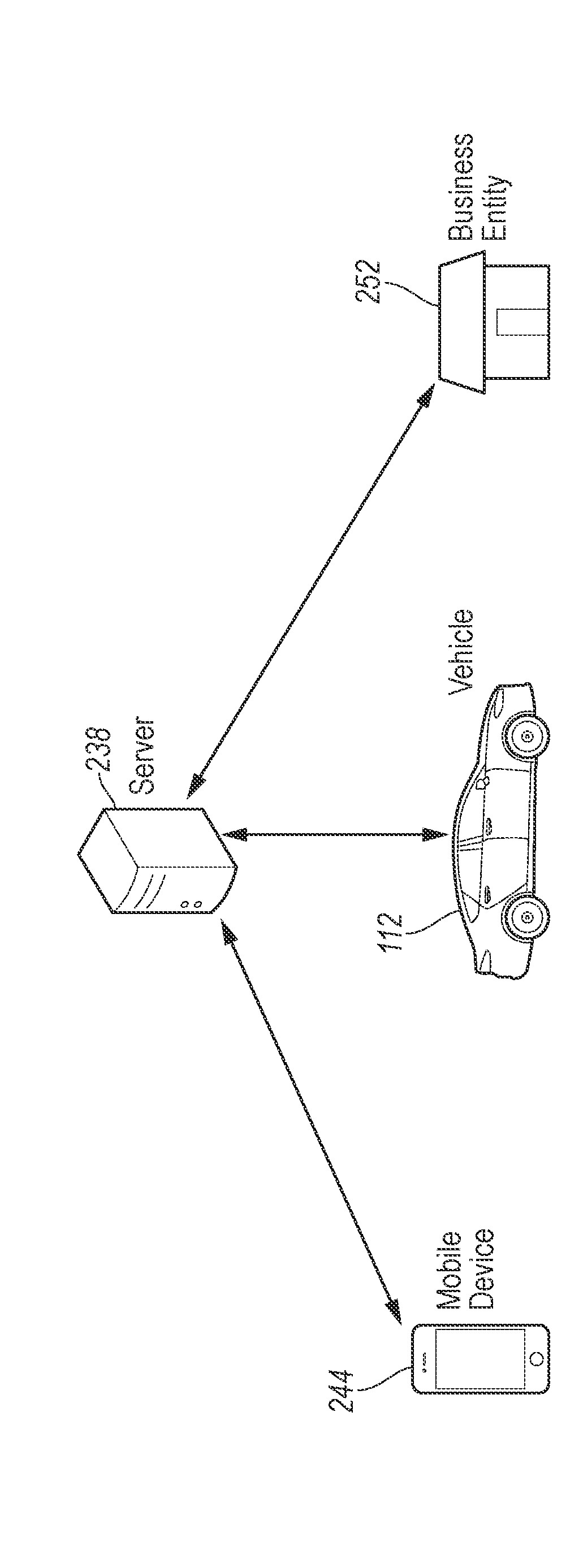
In addition, Ford may be trying to target the more eco-conscious consumer: The company is seeking to patent technology that estimates a car’s carbon footprint in real time. The tool would use blockchain data to record carbon emissions created in “one or more energy supply chains” of the car, such as emissions from tailpipes or the fuel stations the driver chooses. That information is then translated to the kilograms of carbon used and is shown via a user interface, such as a car’s dashboard monitor or a mobile app.
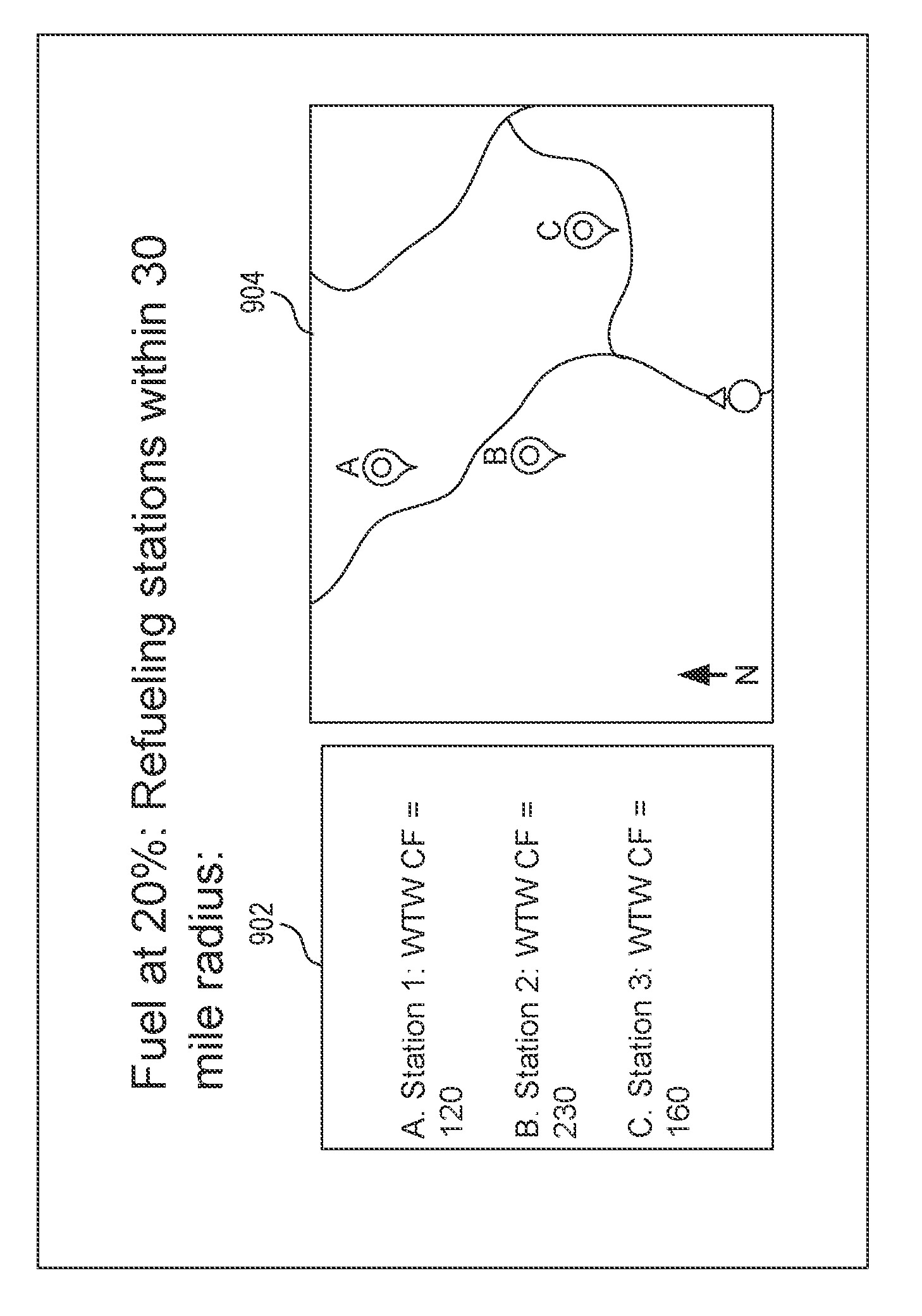
Ford has big goals to climb the ranks of the EV market. It’s planning for half of all vehicles it sells to be electric by 2030, and wants to produce 600,000 EVs a year by 2030. Though Ford is currently a little fish in Tesla’s large EV pond, the company has quickly ramped up its sales in 2022, Scott Case, co-founder and CEO of auto analytics firm Recurrent Auto, told me. Ford currently holds more than 7% of the U.S. market share and sold a total of more than 50,000 of its Mustang Mach-E and F-150 Lightning, two of its latest EV models. Compare that to luxury EV maker Rivian, which sold just under 25,000 EVs last year.
“In 2023, they’ll absolutely blow the doors off in terms of delivery numbers compared to Rivian,” Case said. “They’re just set up for more scale.”
Ford has a long way to go to taking on the EV behemoth that is Tesla. But add-ons like a charging reservation system and a carbon footprint estimator will likely only help capture a wide range of demographics to reach its high-flying goals.
SPONSORED BY THE HUSTLE
As newsletter writers ourselves, we know a thing or two about creating content that breaks through the digital malaise. The Hustle’s been at it for years. After building a 2.8mm+ subscriber newsletter and orchestrating a sale to SaaS giant HubSpot, The Hustle is doubling down on original content.
If you’re a business builder or business enthusiast, you can tune in to The Hustle to get:
Inspiring business content.
Tech news.
Stories from game-changing entrepreneurs and companies.
Here are a few cool stories you’ll find on The Hustle:
How Khaby Lame got 143M followers on TikTok without opening his mouth. The economics of gas stations. Or how snow removal has become a >billion dollar industry.
Increase your business IQ with The Hustle.
#3. *Velma voice* “I can’t see without my (AR) glasses!”
Snap wants to solve a hurdle among AR glasses developers: What do you do if you need glasses to, y’know, see normally?
The company filed for a patent in late September for headwear that would allow people that wear prescription glasses to see through AR its specs without having to double up on frames. Essentially, the device would use brightness correction to “sharpen objects displayed for a user with nearsightedness and/or farsightedness.”
Snap is working overtime on its AR glasses: The company also filed a patent application for a neural network system that detects gestures, activity or movement for its eyewear. Essentially, this tech will cut down how much a wearer has to physically interact with the glasses while they’re wearing them, making them easier to use.
“Due to the small form factor of the eyewear device, manipulation and interacting with, for example, displayed content on an image display, is cumbersome,” Snap wrote in the application.
Despite the initial launch of Snap’s AR Spectacles in 2017 being a spect-actular failure resulting in $40 million in losses, the company has kept hammering away at them, releasing several iterations since, including one in late 2021 that hasn’t hit the shelves yet. Glasses are just one facet of the company’s AR work, which includes things like AR ads and its Lens Studio.
With all of its AR research so far, Snap seems to be placing similar artificial reality bets that several Big Tech companies have been making as the digital advertising business flounders. Several of Snap’s 2022 earnings reports showed a major drop-off in revenue from digital ads – its main money maker. Meanwhile, Meta and Google parent company Alphabet saw similar slowdowns. Snap and other tech firms might see artificial reality as a saving grace.
Extra Drops
Here are a few other cool patents we thought you’d like.
Sony wants to create robot dogs. And no, not in a cute way. The company seeks to patent four-legged robots and a system to control them, but doesn’t go into detail about why. If you’ve seen the show Black Mirror, these things look similar to the murderous mechanical dogs in the episode “Metalhead.” Totally not dystopian at all.
Google wants to hear your heartbeat. The company is looking to patent a smartphone app that, when held up to your chest, can measure your heart rate. Check out last Thursday’s issue of Patent Drop to learn about all the other ways that Google wants to get to know your body.
PayPal wants to make crypto less risky. The company is developing tech to assess fraud risk in blockchain transactions. Given that there have been at least a few headlines of PayPal crypto scams in the past year, this could be part of the company’s plan to put a stop to them.
What else is new?
Microsoft invested $10 billion in OpenAI founder ChatGPT, giving the company access to its advanced AI tech.
Spotify is laying off 6% of its staff, or roughly 600 employees, in order to cut costs after a year of rapid expansion.
The U.S. “No Fly List” was leaked this weekend by a Swiss hacker known as “maia arson crimew,” after airline CommutAir left the highly-sensitive document exposed.
Have any comments, tips or suggestions? Drop us a line! Email at nat@thedailyupside.com or shoot us a DM on Twitter @patentdrop.
